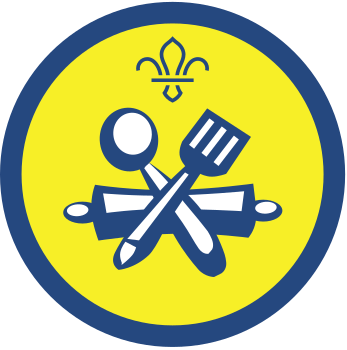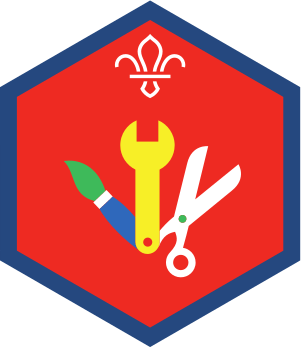Calamity kitchen
You’ll need
- Tables
- Mixing bowls
- Chopping boards
- Access to water
- Saucepan
- Fruit or vegetables
- A plastic knife
- Washing up bowl
- Apron
Before you begin
- Set up a pretend studio kitchen. Put saucepans, cutlery, fruit and vegetables (real or plastic), a chopping board, the plastic knife, and a washing up bowl with some water in on a table. Add as many other props (such as oven gloves or soap) as you like. Set up chairs facing the studio kitchen.
- Decide who will play each role. One person leading the game should become the unsafe chef, and the other should be the producer.
- To make it more fun, you may want to dress up, or choose a name for your characters and their show (for example, ‘Calamity Kitchen with Dorothy Disaster’).
Host the kitchen cooking show
- The producer should welcome everyone to the TV show and make sure they’re all sat so they can see the kitchen set.
- Before the show begins, the producer should start a discussion to find out what everyone knows about staying safe in the kitchen. The producer should help everyone learn how to be safe in the kitchen, then explain that their chef sometimes makes mistakes, and that they need everyone to help them spot when the chef does something wrong.
- It’s time for the show! The people leading the activity should play some music, and everyone should clap to welcome the chef to the studio kitchen.
- The chef should begin cooking their recipe, explaining what they’re doing as they go along.
- Every so often, the chef should make a mistake and ignore one of the things on the ‘Safety in the kitchen’ sheet. For example, they could get to a sink and then decide not to wash their hands, telling the audience that ‘my hands look clean enough’. They could wave a plastic knife around, put something in the oven without oven gloves and pretend to burn their hands, or spill some water on the floor and not wipe it up.
- Whenever the chef makes a mistake or does something unsafe, everyone in the audience should let the producer know. They could make a noise or do an action, for example, saying ‘na ah’ while wiggling their finger.
- When they hear this noise, the cook should pause. The producer should reappear, and ask everyone what happened. They should choose someone with their hand up to show everyone (including the chef!) how to do it right. The audience can make helpful suggestions and encourage the person.
- Keep playing the game until the chef’s made plenty of mistakes, and people have corrected them.
Reflection
This activity let everyone learn the skills they need to be safe in the kitchen and live healthily. This is important, as it stops people getting hurt because of accidents or illnesses. The person leading the reflection should pass around a plastic mixing bowl and a wooden spoon. Everyone should share one thing they’ve found out about safety in the kitchen, and stir it into the bowl. Once everyone’s shared an idea, the person leading the reflection should explain that people have made a ‘safety cake’ that they can remember next time they’re in the kitchen. It’s great that everyone was observant enough to stop the chef getting badly hurt or ill – well done!
Safety
All activities must be safely managed. You must complete a thorough risk assessment and take appropriate steps to reduce risk. Use the safety checklist to help you plan and risk assess your activity. Always get approval for the activity, and have suitable supervision and an InTouch process.
- Food
Remember to check for allergies, eating problems, fasting or dietary requirements and adjust the recipe as needed. Make sure you’ve suitable areas for storing and preparing food and avoid cross contamination of different foods. Take a look at our guidance on food safety and hygiene.
- Sharp objects
Teach young people how to use sharp objects safely. Supervise them appropriately throughout. Store all sharp objects securely, out of the reach of young people.
Make it accessible
All Scout activities should be inclusive and accessible.

